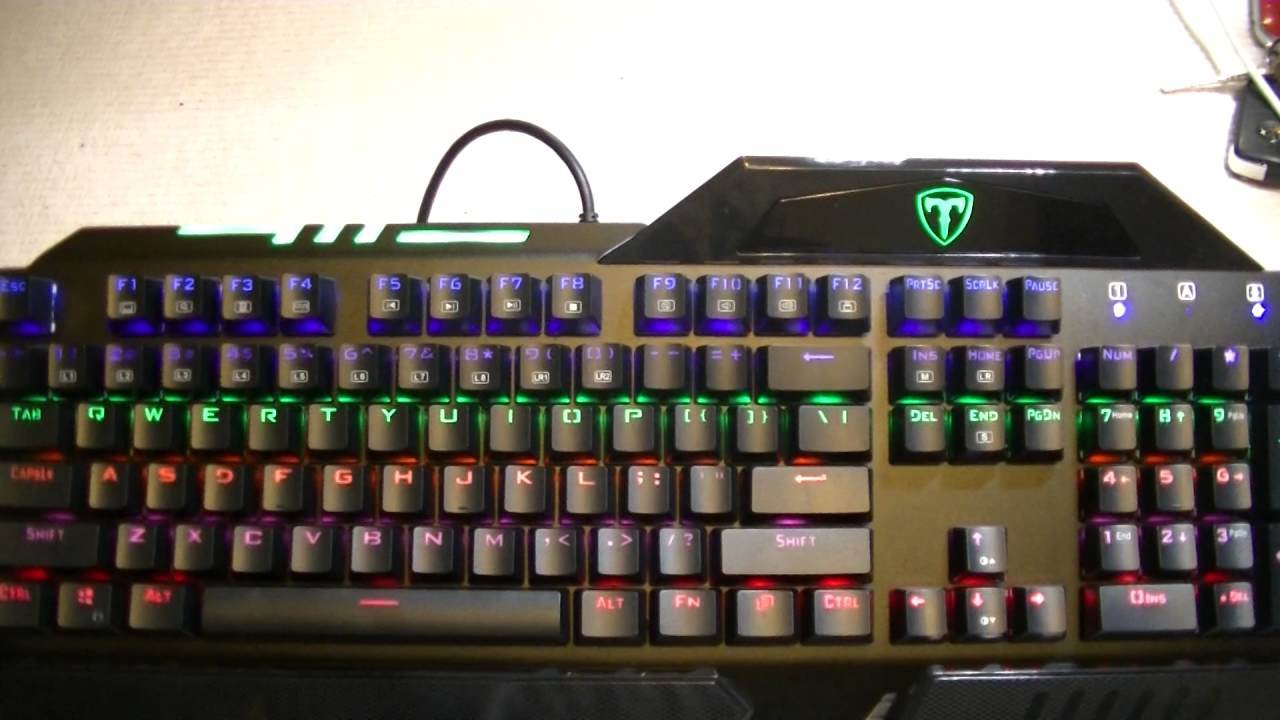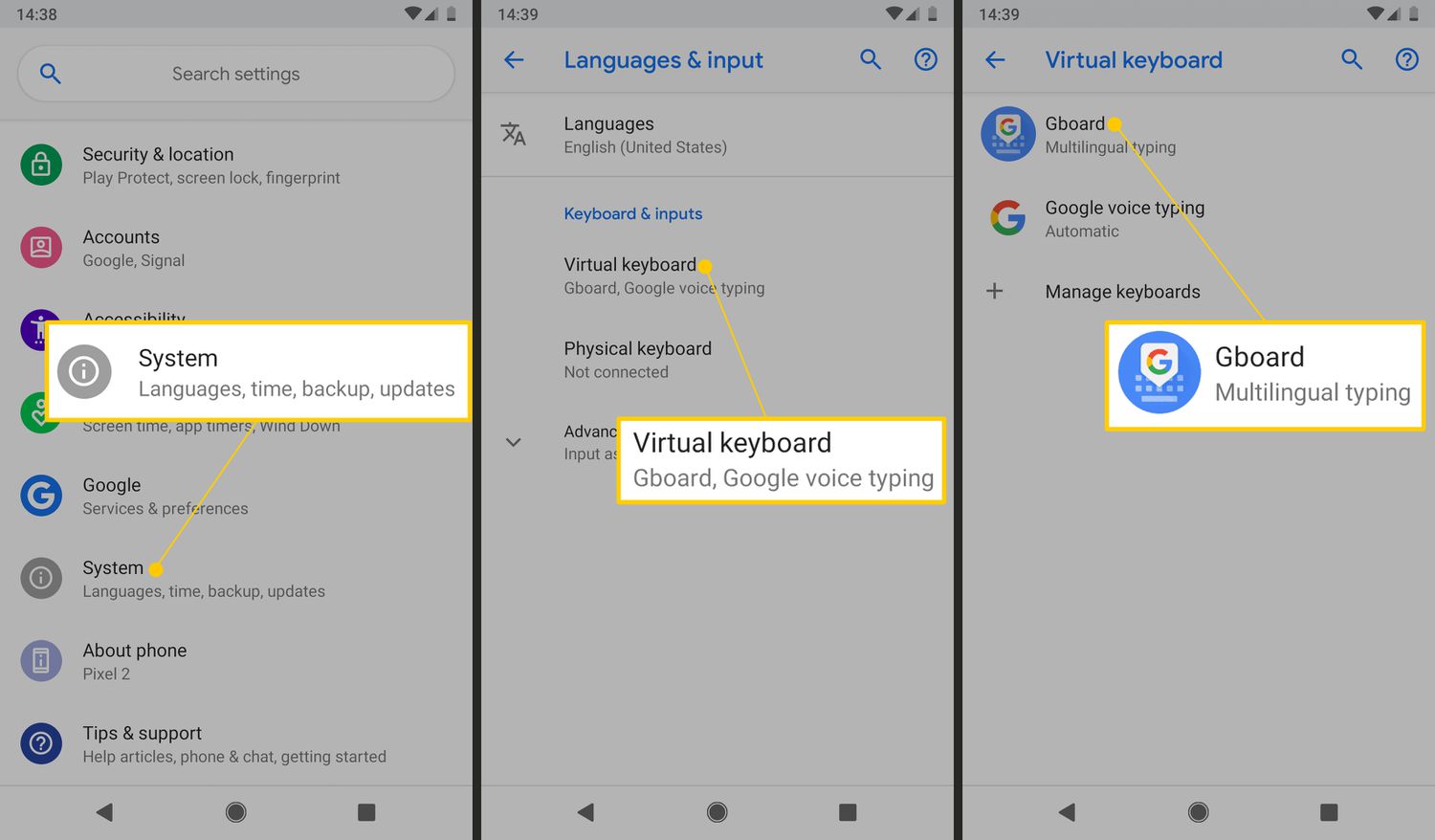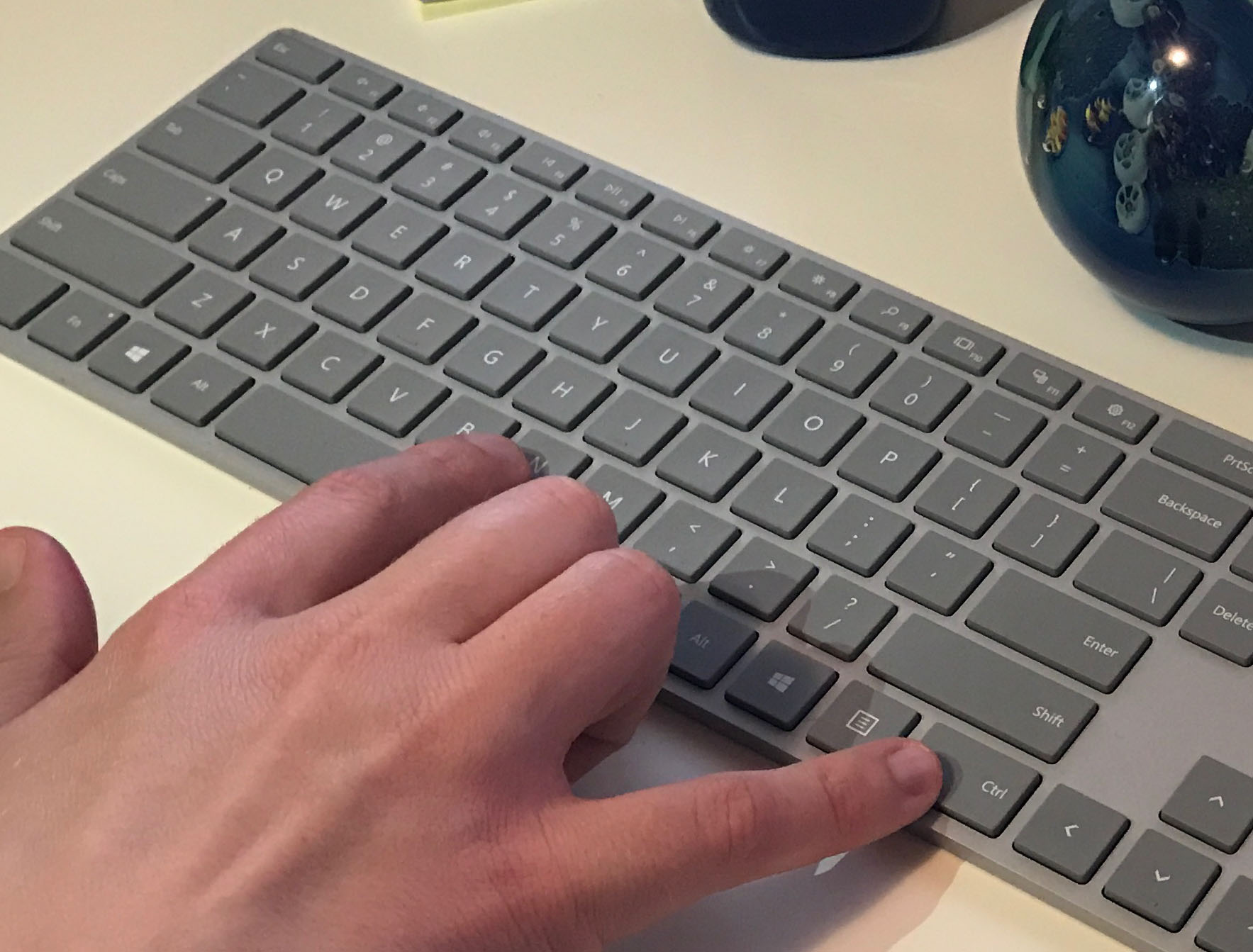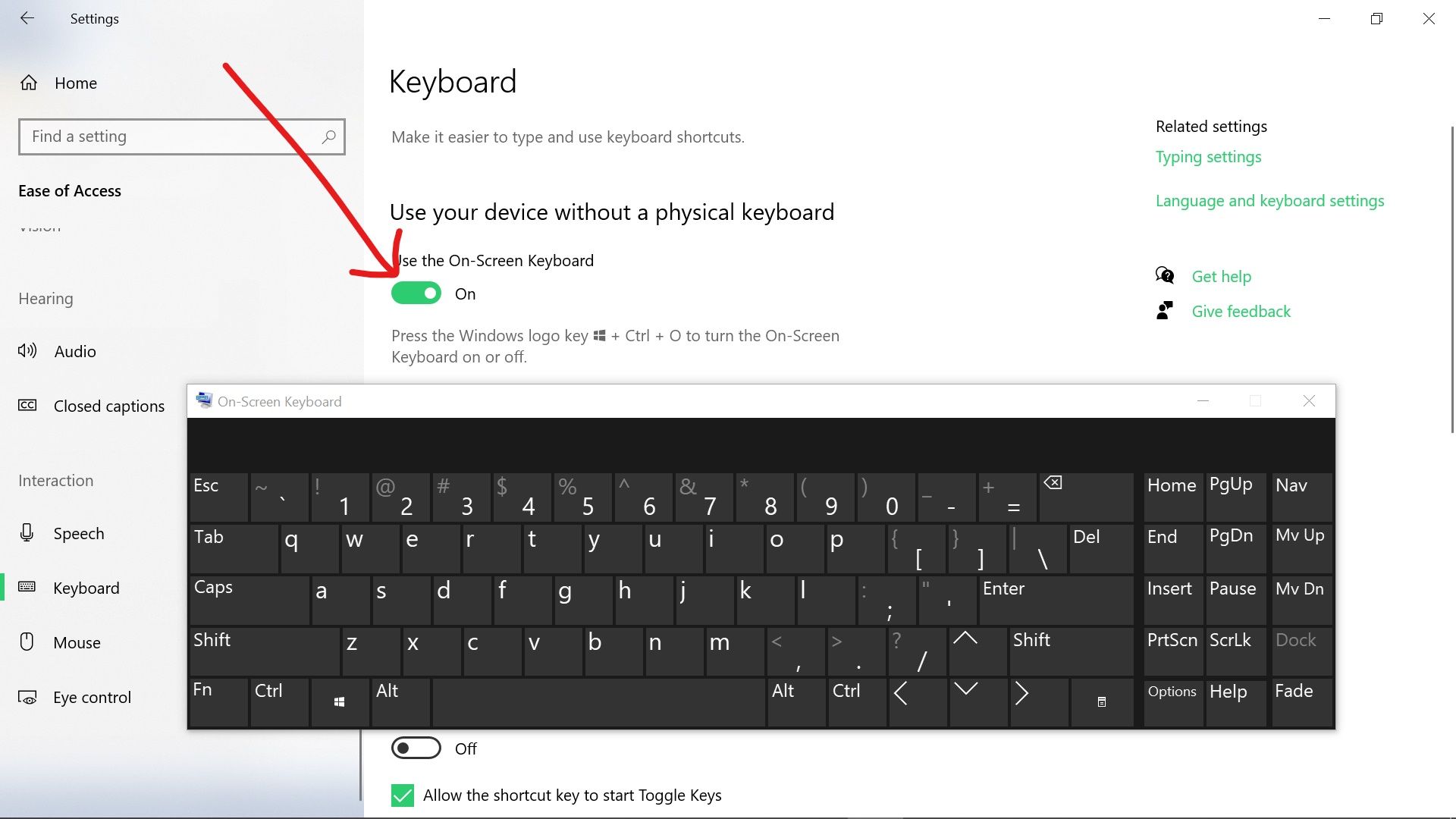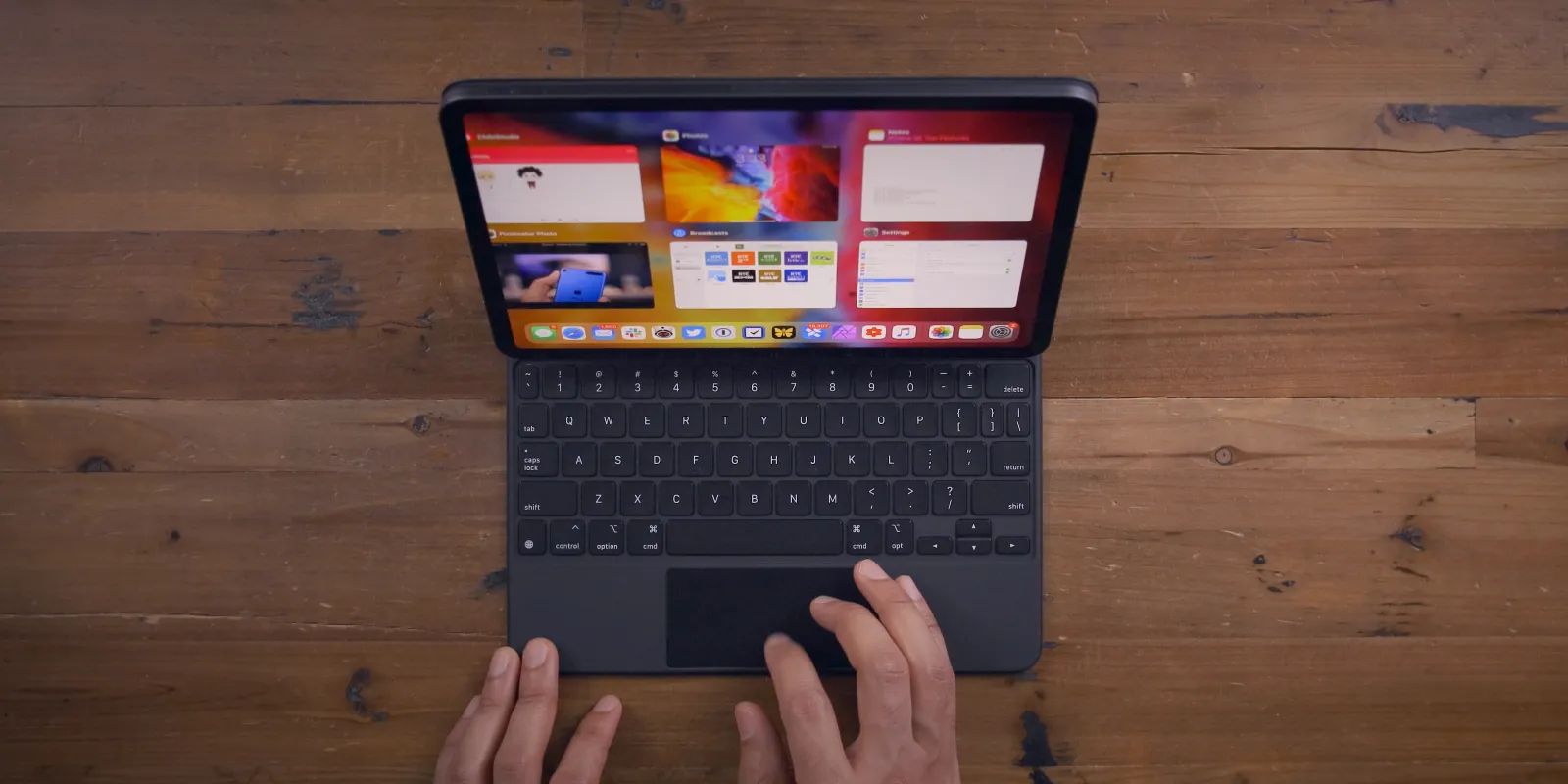Introduction
Having a keyboard that is not working can be a frustrating experience. Whether you’re a student trying to complete an assignment, a professional working on an important report, or simply someone who enjoys browsing the internet, a malfunctioning keyboard can bring your productivity to a halt.
When faced with such an issue, it’s important to understand that there can be various reasons behind why your keyboard is not working. This article will explore some of the common issues that can cause keyboard problems, including both hardware and software-related issues. Additionally, we will provide some troubleshooting steps to help you fix the problem and get your keyboard back up and running smoothly.
Before we delve into the solutions, it’s crucial to determine whether the keyboard issue is hardware or software-related. This distinction will help guide your troubleshooting process and ensure that you are focusing on the right solution.
Hardware issues can include physical damage to the keyboard, loose connections, or faulty hardware components. On the other hand, software issues can arise from incompatible or outdated drivers, conflicts with other software applications, or even the presence of viruses or malware on your computer.
Understanding the root cause of the issue will enable you to tackle the problem effectively and save both time and frustration. So, let’s dive in and explore the different keyboard issues you may encounter and the steps you can take to troubleshoot and fix them.
Common Issues with Keyboard
Keyboards are an essential input device for our computers, but they can sometimes encounter issues that prevent them from functioning correctly. Understanding the common problems that can occur with keyboards will help you identify and resolve the issue more effectively. Here are some of the most frequent keyboard issues people encounter:
- Non-responsive or unresponsive keys: One common issue is when certain keys on the keyboard stop responding or become unresponsive. This can make typing or using keyboard shortcuts extremely frustrating.
- Sticky keys: Sticky keys occur when a key gets stuck in the pressed position or does not return to its original position after being pressed. This can result in repeated characters or difficulty in typing.
- Erratic or ghost typing: Sometimes, the keyboard may exhibit erratic behavior by typing incorrect characters or multiple characters with a single keystroke. This can disrupt your work and make it difficult to input text accurately.
- Unexpected keyboard shortcuts: Certain keyboard combinations or shortcuts may trigger unintended actions or functions. This can disrupt your workflow and cause frustration.
- Lack of backlight: Backlit keyboards are popular among users who frequently work in low-light conditions. If the backlight stops working, it can make it challenging to use the keyboard effectively in dimly lit environments.
These issues can arise due to a variety of reasons, including hardware defects, software conflicts, driver problems, or even physical damage to the keyboard. In the next sections, we will explore these issues in more detail and provide troubleshooting steps to help you resolve the problem.
Hardware Issues
When your keyboard is not working, it’s important to first rule out any hardware-related problems. Here are some common hardware issues that can affect the functionality of your keyboard:
- Physical damage: Accidents happen, and keyboards can be susceptible to physical damage. Spills, drops, or excessive force can cause keys to become unresponsive or stuck. Inspect your keyboard for any visible signs of damage and assess if any keys are physically stuck or damaged.
- Loose connections: Over time, the connection between the keyboard and the computer can become loose. Check the keyboard cable or USB connection to ensure it is securely plugged in. Try unplugging and re-plugging the keyboard to establish a better connection.
- Defective keyboard: Occasionally, keyboards can have manufacturing defects or become faulty over time. If you’ve ruled out external factors causing the issue and the keyboard is still not working properly, it may be time to consider replacing it.
To troubleshoot hardware-related keyboard problems, try the following steps:
- Check for physical damage: Inspect the keyboard for any visible signs of damage, such as broken keys or loose parts. If you find any, consider replacing the affected keys or the entire keyboard if necessary.
- Secure the connection: Ensure that the keyboard cable or USB connection is securely plugged in. If it’s loose, unplug and tightly reinsert the cable.
- Test the keyboard on another computer: Connect the keyboard to a different computer to see if it works. If it does, it indicates that the issue may be related to your computer’s hardware or software configuration.
- Try a different keyboard: If you have access to another keyboard, connect it to your computer and see if it works. If the alternative keyboard functions correctly, it suggests that the original keyboard is defective.
By following these steps, you can identify and resolve any hardware-related issues that might be causing your keyboard malfunction. If the problem persists, it’s time to explore software-related issues, which will be discussed in the next section.
Software Issues
If your keyboard is not working properly, there’s a possibility that the issue is related to software rather than hardware. Here are some common software issues that can cause keyboard problems:
- Outdated drivers: Keyboard drivers facilitate communication between the hardware and the operating system. Outdated or incompatible drivers can result in keyboard malfunctions. Check if there are any driver updates available for your keyboard.
- Conflicting software: Some software applications, especially those related to keyboard customization or input methods, can conflict with the normal functioning of your keyboard. Disable or uninstall such software to see if it resolves the issue.
- Viruses and malware: Malicious software can disrupt the normal functioning of your computer, including the keyboard. Conduct a thorough scan of your system using reliable antivirus software to ensure that it is free from any threats.
- Incompatible settings: Incorrect keyboard settings or language preferences can also cause keyboard problems. Check your language settings and ensure they match your keyboard layout.
To troubleshoot software-related keyboard issues, you can try the following steps:
- Update keyboard drivers: Visit the manufacturer’s website for your keyboard and download the latest drivers available. Install them and restart your computer to see if it fixes the problem.
- Disable or uninstall conflicting software: If you suspect that certain software applications are causing the issue, disable or uninstall them temporarily to see if it resolves the problem. You can always reinstall or enable them later if necessary.
- Run antivirus software: Perform a comprehensive scan of your computer using reliable antivirus software. If any threats are detected and removed, restart your computer and check if the keyboard starts working normally.
- Check keyboard settings: Ensure that your keyboard settings are configured correctly. Verify that the language and input settings are aligned with your keyboard layout.
By following these steps, you can address software-related issues that may be causing your keyboard to malfunction. If the problem persists, it may be time to explore other potential causes, such as driver issues, which we will discuss in the next section.
Driver Issues
Sometimes, keyboard issues can be attributed to problems with the drivers that facilitate communication between the keyboard and the computer’s operating system. Here are some common driver-related issues that can cause keyboard problems:
- Outdated or incompatible drivers: If your keyboard drivers are outdated or incompatible with your operating system, it can lead to keyboard malfunctions. Ensure that you have the latest drivers installed for your keyboard.
- Corrupted drivers: Drivers can become corrupted due to various reasons, such as software conflicts or system crashes. Corrupted drivers can prevent the keyboard from functioning correctly.
- Missing drivers: Sometimes, the drivers for your keyboard may be missing or not installed properly. This can lead to keyboard-related issues.
Here are some troubleshooting steps you can take to address driver-related keyboard problems:
- Update keyboard drivers: Visit the manufacturer’s website for your keyboard and download the latest drivers available. Install them and restart your computer to see if it resolves the issue.
- Rollback drivers: If you recently updated your keyboard drivers and started experiencing issues, you can try rolling back to the previous version to see if it resolves the problem.
- Reinstall drivers: Uninstall the existing keyboard drivers from your computer and then reinstall them. This can help to resolve any driver-related issues or conflicts.
- Use generic drivers: If specific drivers for your keyboard are not available, you can try using generic keyboard drivers provided by the operating system. While this may not offer all the features of your keyboard, it can help with basic functions.
By following these steps, you can address driver-related issues that may be causing your keyboard to malfunction. If the problem persists, further troubleshooting steps or seeking professional assistance may be necessary.
How to Troubleshoot and Fix Keyboard Problems
When faced with a non-functioning keyboard, it’s essential to follow a systematic troubleshooting approach to identify and resolve the problem. Here are some steps you can take to troubleshoot and fix keyboard problems:
- Check the keyboard connections: Ensure that the keyboard is properly connected to your computer. If it is a wired keyboard, check the cable for any signs of damage or looseness. For wireless keyboards, make sure the batteries are properly inserted and that the keyboard is within range of the receiver.
- Restart your computer: Sometimes, a simple restart can temporarily resolve keyboard issues caused by software glitches. Restart your computer and check if the keyboard starts working properly.
- Update keyboard drivers: Visit the manufacturer’s website for your keyboard and download the latest drivers available. Install them and restart your computer to see if it resolves the issue.
- Use the on-screen keyboard: If your keyboard is not working at all, you can use the on-screen keyboard that comes pre-installed with your operating system. This virtual keyboard allows you to input text using your mouse or touchpad.
- Check for viruses and malware: Run a thorough scan of your computer using reliable antivirus software to ensure that there are no viruses or malware affecting the normal functioning of your keyboard.
- Disable or uninstall conflicting software: If you suspect that certain software applications are causing conflicts with your keyboard, temporarily disable or uninstall them to see if it resolves the issue.
- Test the keyboard on another computer: Connect your keyboard to a different computer and see if it works correctly. If it does, it indicates that the issue may be related to your computer’s hardware or software configuration.
- Replace the keyboard: If you have tried all the troubleshooting steps and the problem persists, it may be time to consider replacing your keyboard. Consult with the manufacturer or a computer technician to find a suitable replacement.
By following these troubleshooting steps, you can often resolve common keyboard problems. However, if the issue persists or if you are unsure about performing any of the steps, it’s recommended to seek professional assistance to avoid causing further damage.
Check the Keyboard Connections
One of the first things you should do when troubleshooting a keyboard issue is to check the connections. Loose or faulty connections can cause a keyboard to malfunction. Here’s what you can do:
- Wired keyboard: If you’re using a wired keyboard, start by checking the cable connection. Ensure that it is securely plugged into the appropriate port on your computer. Inspect the cable for any visible signs of damage or fraying. If you find any issues, try using a different cable to connect your keyboard.
- Wireless keyboard: For wireless keyboards, check if the batteries in the keyboard are properly inserted and still have charge. Also, ensure that the keyboard is within range of the receiver connected to your computer. If the batteries are low, replace them with fresh ones.
- USB port: If you’re using a USB keyboard, try plugging it into a different USB port on your computer. Sometimes, certain USB ports may not function correctly, and switching to a different port can resolve the issue.
- Bluetooth connection: If you’re using a Bluetooth keyboard, ensure that Bluetooth is enabled on your computer and that the keyboard is paired correctly. You may need to remove the existing pairing and re-pair the keyboard to establish a stable connection.
After checking the connections, test your keyboard to see if it is working properly. If the issue persists, you can try restarting your computer and checking the keyboard again. Sometimes, a simple restart can fix minor connection or software-related problems.
By ensuring that the keyboard connections are secure and working correctly, you can eliminate any potential issues caused by loose connections or faulty cables. If the keyboard still does not work after checking the connections, proceed to the next troubleshooting step to identify and resolve the problem.
Restart Your Computer
Restarting your computer is a simple yet effective troubleshooting step that can help resolve various keyboard issues. When you encounter a problem with your keyboard, a restart can often refresh the system and clear any temporary glitches that may be causing the malfunction. Here’s how you can restart your computer to troubleshoot keyboard problems:
- Save your work: Before restarting your computer, make sure to save any unsaved documents or files. Closing all open applications and saving your work ensures that you don’t lose any important data.
- Click on the Start menu: In the bottom left corner of your screen, click on the Start menu icon (Windows logo).
- Click on Power: In the Start menu, you will see the Power option. Click on it to expand the power menu.
- Select Restart: Once the power menu appears, select Restart. This will initiate the restart process.
- Wait for the computer to restart: Your computer will start shutting down and then reboot. It may take a few minutes for the process to complete, so be patient.
- Test your keyboard: After the computer restarts, log back in and test your keyboard to see if it is functioning correctly. Try typing in a document or using keyboard shortcuts to check all the keys.
In many cases, a simple restart can resolve keyboard issues caused by temporary software glitches or conflicts. Restarting your computer allows the operating system to reload all necessary drivers and settings, which can help restore proper functionality to the keyboard.
If the keyboard is still not working after the restart, it’s time to move on to other troubleshooting steps to identify and address the problem. Restarting your computer is a quick and easy first step, but there may be underlying issues that require further investigation and resolution.
Update Keyboard Drivers
Outdated or incompatible keyboard drivers can often cause keyboard malfunctions. Updating the drivers can help resolve these issues and ensure that your keyboard works optimally. Here’s how you can update your keyboard drivers:
- Identify your keyboard: Start by identifying the make and model of your keyboard. This information is usually found on the keyboard itself or in the user manual.
- Visit the manufacturer’s website: Go to the official website of the keyboard manufacturer. Look for a support or downloads section where you can find the latest drivers for your specific keyboard model.
- Download the drivers: Locate the drivers for your keyboard model and download the appropriate version for your operating system. Ensure that you choose the correct drivers to avoid compatibility issues.
- Install the drivers: After downloading the drivers, double-click on the installation file and follow the on-screen instructions to install them. Make sure to restart your computer after the installation is complete.
- Windows Update: If you’re using a Windows computer, you can also try updating the keyboard drivers through Windows Update. Open the Start menu and search for “Windows Update.” Select “Check for updates” and let Windows search for any available driver updates. If an update for your keyboard is found, click “Install” to update the drivers.
Updating your keyboard drivers ensures that you have the latest software that can communicate effectively between the hardware and the operating system. This can resolve issues related to compatibility, performance, and connectivity.
After updating the keyboard drivers, test your keyboard to see if the issues have been resolved. Try typing, using shortcuts, and accessing special functions to ensure that all keys and features are working correctly. If the problem persists, you may need to explore other troubleshooting steps or seek further assistance.
Use the On-Screen Keyboard
If your physical keyboard is not working or if specific keys are unresponsive, you can utilize the built-in On-Screen Keyboard as a temporary solution. The On-Screen Keyboard is a virtual keyboard that allows you to input text using your mouse or touchpad. Here’s how you can access and use the On-Screen Keyboard:
- Windows: For Windows users, click on the Start menu and search for “On-Screen Keyboard” or “OSK”. Click on the On-Screen Keyboard application that appears in the search results to open it.
- Mac: Mac users can find the On-Screen Keyboard by going to the Apple menu, selecting “System Preferences,” and then choosing “Keyboard.” In the Keyboard preferences, click on the “Keyboard” tab and check the box next to “Show Keyboard & Character Viewers in menu bar.” This will enable the On-Screen Keyboard icon to appear in the menu bar. Click on the icon, and select “Show Keyboard Viewer.”
- Using the On-Screen Keyboard: Once you have opened the On-Screen Keyboard, you can use your mouse or touchpad to click on the virtual keys to input text. You can also use the shift, ctrl, and alt buttons to access additional characters and functions.
- Accessibility Options: In the On-Screen Keyboard settings, you can adjust various options, such as the size and layout of the virtual keyboard, as well as enable or disable specific features such as sticky keys or filter keys. These options can provide additional assistance for individuals with accessibility needs.
While the On-Screen Keyboard is a helpful solution when your physical keyboard is not working, it may not be as efficient or convenient for long-term use. It is recommended to fix the underlying keyboard issues or seek a replacement if necessary.
After using the On-Screen Keyboard, continue testing your physical keyboard periodically to check if it has started functioning correctly. If the problem persists, you may need to explore other troubleshooting steps discussed earlier or consult with a professional for further assistance.
Check for Viruses and Malware
Sometimes, keyboard problems can be caused by malicious software such as viruses and malware. These harmful programs can interfere with the normal functioning of your computer, including the keyboard. To ensure your keyboard is not affected by viruses or malware, it’s essential to run a thorough scan of your system. Here’s how you can check for viruses and malware:
- Install reputable antivirus software: If you haven’t already, install reliable antivirus software on your computer. Make sure the antivirus software is up to date with the latest virus definitions.
- Perform a full system scan: Open your antivirus software and initiate a full system scan. This comprehensive scan will check all files, programs, and processes on your computer for any potential threats.
- Quarantine or remove detected threats: If the antivirus software detects any viruses or malware, follow the prompts to quarantine or remove the threats. It’s important to remove any detected threats to ensure the safety and security of your system.
- Update your operating system: Keeping your operating system up to date with the latest security patches and updates is crucial. Regularly check for and install updates to ensure that your system is protected against known vulnerabilities.
- Enable firewall protection: Activate and configure a firewall on your computer. A firewall acts as a barrier between your system and potential threats, helping to prevent unauthorized access and minimizing the risk of infections.
By regularly checking for viruses and malware, you can minimize the chances of encountering keyboard issues caused by malicious software. Running regular scans and keeping your antivirus software up to date provide an added layer of protection for your computer.
After completing the scan, restart your computer and test your keyboard to ensure that it is functioning correctly. If the keyboard issue persists, you may need to explore other troubleshooting methods or seek expert assistance to resolve the problem.
Disable or Uninstall Conflicting Software
Sometimes, keyboard problems can be caused by conflicts with other software applications installed on your computer. Certain programs, especially those related to keyboard customization or input methods, can interfere with the normal functioning of your keyboard. Disabling or uninstalling these conflicting software can help resolve keyboard issues. Here’s how you can do it:
- Identify potential conflicting software: Review the software applications installed on your computer and identify any programs that may be related to keyboard customization, input methods, or other utilities that may affect keyboard functionality.
- Disable the software: If you suspect that a specific program is causing conflicts with your keyboard, try disabling it temporarily. Look for options within the program’s settings to disable or turn it off. You may need to consult the software’s documentation or contact the developer for assistance.
- Uninstall the software: If disabling the software does not resolve the keyboard issue, consider uninstalling it completely. Go to the Control Panel or the Settings menu on your computer, locate the program in the list of installed applications, and choose to uninstall it. Follow the on-screen instructions to complete the uninstallation process.
- Restart your computer: After disabling or uninstalling the conflicting software, restart your computer to ensure that the changes take effect. This can help refresh the system and resolve any conflicts that may have been affecting your keyboard.
Disabling or removing conflicting software can help identify and resolve issues related to keyboard functionality. However, it’s important to note that disabling or uninstalling certain programs may affect other features or functionalities on your computer. Ensure that you are only disabling or uninstalling software that is causing conflicts with your keyboard and not any essential system components.
After restarting your computer, test your keyboard to see if it is working correctly. If the problem persists, you might need to explore other troubleshooting methods or seek expert advice to resolve the issue.
Test the Keyboard on Another Computer
If you’re still experiencing issues with your keyboard, it can be helpful to test it on another computer. This step is crucial in determining whether the problem lies with the keyboard itself or with your computer’s hardware or software configuration. Here’s how you can test your keyboard on another computer:
- Find another computer: Locate another computer that you can use to test your keyboard. It could be a friend’s computer, a family member’s computer, or any other system that you have access to.
- Disconnect the keyboard: Disconnect your keyboard from your computer and bring it to the other computer.
- Connect the keyboard: Connect your keyboard to the other computer using the appropriate connection (USB, PS/2, wireless receiver, etc.).
- Test the keyboard: Once connected, use your keyboard on the other computer and try typing, using shortcuts, and accessing special functions to ensure its proper functionality.
If the keyboard works without any issues on the other computer, it indicates that the problem lies with your initial computer’s hardware or software configuration. In this case, you may need to further troubleshoot or seek expert assistance to identify and resolve the specific issue affecting your computer.
On the other hand, if the keyboard exhibits the same problems on the other computer, it suggests that the issue lies with the keyboard itself. In this situation, you may consider replacing the keyboard or contacting the manufacturer for further support or guidance.
Testing your keyboard on another computer helps isolate the source of the problem and narrows down the possible causes. This information will be valuable when seeking assistance or considering the next troubleshooting steps to resolve the keyboard issues effectively.
Replace the Keyboard
If you have tried all the troubleshooting steps and your keyboard is still not functioning properly, it may be time to consider replacing it. A malfunctioning keyboard can greatly impact your productivity and make using your computer a frustrating experience. Here are some tips on replacing your keyboard:
- Identify the type of keyboard: Determine the type of keyboard you currently have. Keyboards come in different variants, such as standard wired keyboards, wireless keyboards, ergonomic keyboards, and gaming keyboards. Make sure to choose a replacement keyboard that suits your needs and preferences.
- Research and select a replacement: Take some time to research different keyboard options available in the market. Read reviews, compare features, and consider factors like comfort, durability, key layout, and compatibility with your computer system.
- Check compatibility: Ensure that the replacement keyboard is compatible with your computer’s operating system. Check the system requirements specified by the manufacturer before making a purchase.
- Purchase and install: Once you have selected the replacement keyboard, purchase it from a reputable retailer or directly from the manufacturer. Follow the installation instructions provided with the new keyboard to connect and set it up properly.
- Dispose of the old keyboard: When replacing your keyboard, remember to dispose of the old keyboard responsibly. Keyboards are typically considered electronic waste and should not be thrown in regular trash. Check with local recycling centers or electronic waste disposal facilities for proper disposal options.
Replacing your keyboard can provide a fresh start, eliminating any potential hardware issues that may be hindering its functionality. It allows you to enjoy a reliable and fully functional keyboard that suits your needs and preferences.
If you are unsure about replacing the keyboard yourself, you can seek assistance from a professional or a technician who can help with the installation and ensure compatibility with your computer system.
Remember, a well-functioning keyboard is essential for efficient computer usage, so investing in a quality replacement can greatly enhance your user experience and productivity.
Conclusion
Dealing with a malfunctioning keyboard can be frustrating, but by following the appropriate troubleshooting steps, you can often resolve the issue and get your keyboard back to working properly. We have explored various common issues that can affect keyboard functionality, including hardware, software, driver-related problems, and more.
Starting with simple checks such as ensuring proper keyboard connections and restarting your computer can often resolve minor issues. Updating keyboard drivers, checking for viruses and malware, and disabling conflicting software are steps you can take to address software-related problems. If all else fails, testing the keyboard on another computer can help determine if the issue lies with the keyboard itself or the computer’s hardware or software configuration.
In certain cases, replacing the keyboard may be the best solution, especially if the keyboard is physically damaged or if none of the troubleshooting steps have produced a satisfactory result. It is important to choose a replacement keyboard that suits your needs and ensure compatibility with your computer system.
Remember, when troubleshooting and fixing keyboard problems, it’s essential to prioritize your safety and protect your data. Always follow proper guidelines for handling electronic devices and backup your important files before attempting any major changes or replacements.
If you’re uncertain or uncomfortable performing the troubleshooting steps yourself, consider seeking assistance from professionals or technicians who can diagnose and resolve the keyboard issues for you.
By following these guidelines and taking the necessary steps, you can overcome keyboard problems and resume using your computer with a fully functioning keyboard.











